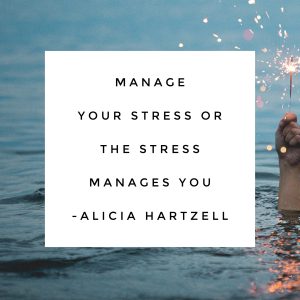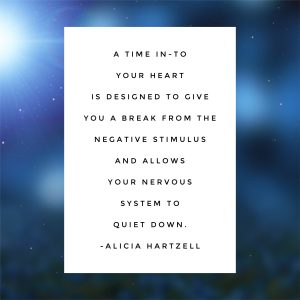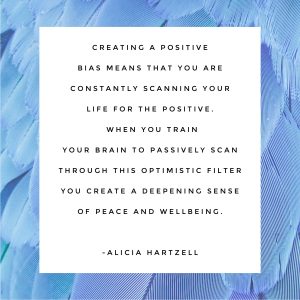 Ok, today we are talking about stress. We all have it in our lives to varying degrees. Stress most often comes from the dynamics we have with the people around us, our environment (such as home, school, work, the things we have or don’t have in our lives), and our inner dialog. This means that stress can filter into our lives from almost every direction.
Ok, today we are talking about stress. We all have it in our lives to varying degrees. Stress most often comes from the dynamics we have with the people around us, our environment (such as home, school, work, the things we have or don’t have in our lives), and our inner dialog. This means that stress can filter into our lives from almost every direction.
But here is the good news, when you reframe your relationship to stress and learn to manage it everything starts to feel less overwhelming. You have to manage your stress or the stress will manage you.
Your very handy biological stress response helps keep you alive and can help you stay on task and get things done. It can actually feel exhilarating to get that project done just in time or complete that thing you have to do before the deadline. Your stress response helped you get there.
 Your stress response was not designed to be flooding your nervous system all of the time. Long-term stress can exhaust the body and create issues like anxiety, depression, memory and cognitive issues, digestive problems, headaches and an overall sense of overwhelm.
Your stress response was not designed to be flooding your nervous system all of the time. Long-term stress can exhaust the body and create issues like anxiety, depression, memory and cognitive issues, digestive problems, headaches and an overall sense of overwhelm.
Think of it like this; your nervous system is built for a sprint not a marathon of stress. You can handle short bursts of stress but you are not designed for continued long-term or chronic stress.
This is why it’s important to learn strategies to help you manage the stress that comes into your life. So today we are going to focus on Response Strategies that you can use in response to the moment acute stress comes into your life and Long-term Strategies that can help you change your over all relationship with stress.
RESPONSE STRATEGIES:
 Time In-To Your Heart
Time In-To Your Heart
We have all heard of having a time out. It’s usually associated with doing something wrong and then having to create time to think about what you have done. It’s designed to give you a break from the stimulus that caused the problem.
A Time In-To Your Heart also is designed to give you a break from the negative stimulus. This allows your nervous system to quiet down. Quieting your nervous system down allows you to quiet the fight, flight or freeze part of your brain know as the amygdala.
A Time In-To Your Heart takes about a minute and a half. You do four rounds of square breathing where you inhale for four counts filling your lungs, diaphragm, and belly, hold for four counts, exhale for four counts releasing all the air and then hold for four counts.
 The first round you do with your hand on top of your head, the second round you do with your hand on your forehead, the third round you do with your hand on your throat, and the fourth you do with your hand on your heart. Focus on the breath and the counting only.
The first round you do with your hand on top of your head, the second round you do with your hand on your forehead, the third round you do with your hand on your throat, and the fourth you do with your hand on your heart. Focus on the breath and the counting only.
Then you can finish up with a big inhale and exhale allowing your body to shake off any tension that might be stuck. You can repeat this as many times as you need to until you really feel the reaction of your nervous system slow down.
Witness & Observe
Once your nervous system is calmed down, you can actively become a witness and observer of whatever is creating the stress in your life. This allows you to see the stress as something outside of yourself rather then something tangled within you, that you can’t seem to escape. When you create this space between you and the stressor in this way it allows you room to reach for thoughts from your solution oriented pre-frontal cortex.
 Make Your Choice
Make Your Choice
You always have a choice to how your respond and interact to a stressor that comes into your life. Remember your nervous system just wants you to react by fighting, running or shouting down. But using your Time In-To Your Heart and becoming an observer allows you to take back your power and stop that physical and emotional reaction.
From here you have a choice to make. You can choose to fall back into the pattern of thought associated with the stress plugged into your amygdala or continue forward with a pattern of thought that is solution oriented and plugged into your prefrontal cortex. One focuses on what is and one focuses on what is possible. Both are an option for you and this absolutely a choice to be made.
REFERENCE: We talk more about this choice in this Emotional Tool Jellyfish Beach Blog and Video
LONG-TERM STRATEGIES:
 Positive Bias
Positive Bias
Creating a positive bias means that you are constantly scanning your life for the positive. When you train your brain to passively scan through this optimistic filter you create a deepening sense of peace and wellbeing. This is a wonderful long-term approach to managing stress. If you are searching your life for things that are positive, and feel good to you on a daily basis you fortify your sense of inner peace. A peaceful mind bolstered by optimism makes it harder for stress to linger.
One of the easiest ways to create this kind of positive bias is thought gratitude. Tasking yourself to call out what you are grateful for each day keeps you scanning for those things that delight your senses. As you scan, keep in mind your senses and nouns are wonderful places to find gratitude. Through your day you can scan for the person, place, thing, or idea that amused you and take note of why you are grateful for it. Scan in the same way with your sense: tasting, seeing, hearing, smelling or touching things that bring you joy or happiness through your day.
REFERENCE: We talk more about positive and negative bias in this blog and video
Sleep
Sleep is so important to your ability to manage stress because it allows your brain and body to repair and process. While you sleep your brain is archiving, sending immune responses throughout your whole body, flushing toxins and allowing your nervous system to rebuild. When your brain and whole body have had enough time to do these important jobs you move through your day feeling much more equipped to handle the things that come your way. Getting enough sleep also helps you build up a reserve of energy, which allows you to feel better, making it easier to process stress that may move through your day.
 Physical Activity
Physical Activity
Moving your body with kindness also helps you build a sense of wellbeing. Think of your body as the houses where your mind, heart, and being dwell. You don’t want that house to be closed off, dark, stagnant, and depressing. Stress is way more likely to take up residency there. So open up your house and get the light shining in. Take a walk, stretch, go for a swim, dance while you listen to your favorite song, do some yoga poses, do any kind of physical activity that feels good and allows energy to move through your body.
Nature
Being in nature is a great way to boost your overall energy levels. Elevated energy levels are wonderful when you are learning to manage stress. Putting  your feet in the grass and skin in the sunshine can help boost those positive hormone levels in the brain. Focusing on the beauty in nature or the sense that you are a small part of a bigger experience can trigger those pleasure centers in your brain that help you build your over all sense of wellbeing.
your feet in the grass and skin in the sunshine can help boost those positive hormone levels in the brain. Focusing on the beauty in nature or the sense that you are a small part of a bigger experience can trigger those pleasure centers in your brain that help you build your over all sense of wellbeing.
Now you have some very practical tools and strategies for managing both acute and chronic stress in your life. It’s time to make more room in your life to feel good and foster that inner peace you deserve.
Let me know if you have questions, I am here to help.
Subscribe to my emails and my YouTube channel, like and share the video and blog, and until next time, know I am holding a place of love for you where your path through the stress to the peace is undeniable.



